When people move their bodies, the gap between their mental motor imagery and their actual movements can lead to motor dysfunction, operational errors, and various illusions. Our research aims to measure this gap and support skill acquisition by presenting correct imagery. We also explore applications that leverage this gap for new forms of entertainment, such as gaming experiences and live performances.
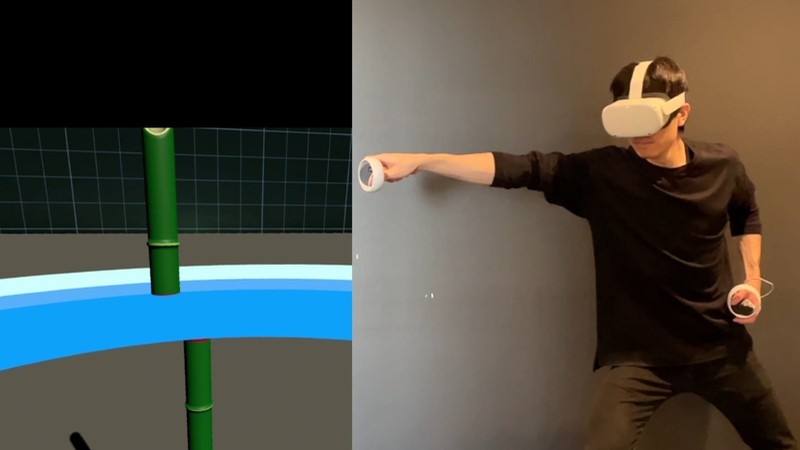
Motor Imagery and Skill Acquisition
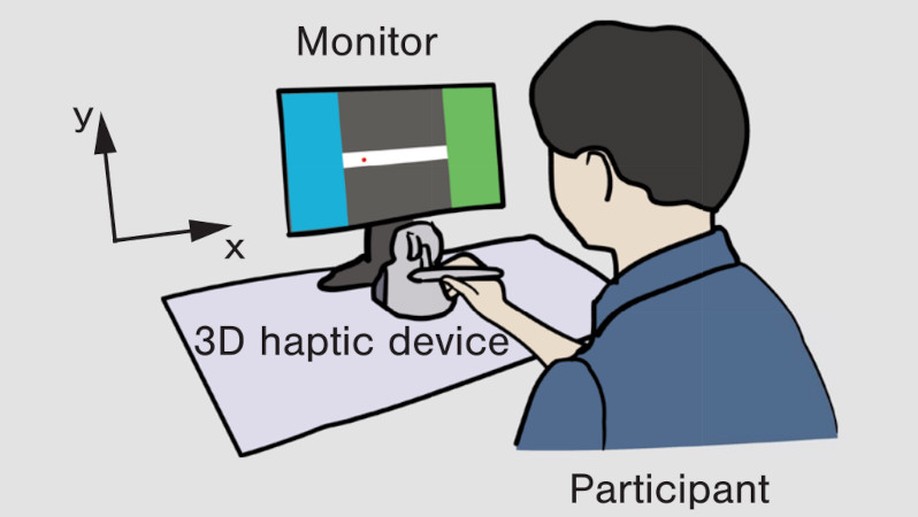
Visual background information modulates motor contagions in humans
This study investigates how visual background context modulates motor contagions. In a hand-steering task, congruency between observed cursor motion and channel shape altered contagion strength, suggesting that background cues influence implicit motor learning.

Pseudo-buoyancy perceptions through fluid simulation
We investigated a method for inducing pseudo-buoyancy perception when touching objects floating in liquid within a virtual environment using fluid simulation. Our findings suggest that high-precision visualization of fluid behavior and displacement of the virtual hand can provide participants with a sense of buoyancy.
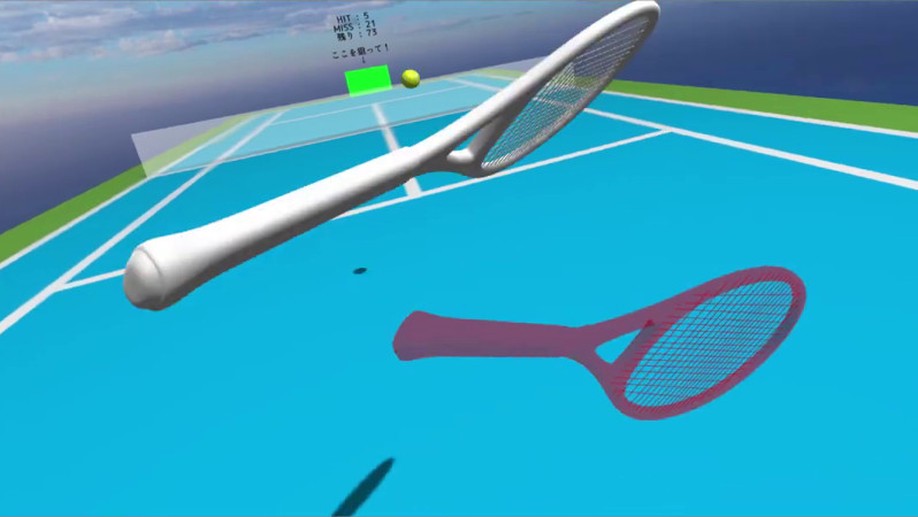
A virtual tennis training support system using simple visual feedback
We developed a method for VR tennis training that briefly displays the racket’s position and orientation as a ghost. By providing focused feedback, our aim is to increase the amount of practice per unit time. Both short-term and long-term experiments confirmed increased practice volume and sustained effects.
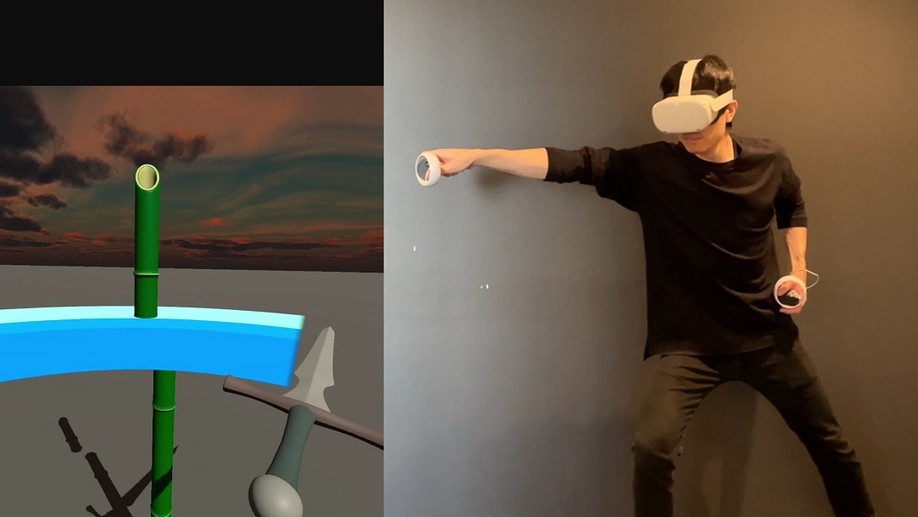
VR-iai
When swinging a sword in VR space, displaying the sword movement at the user’s actual operation speed makes it feel slow and reduces the sense of exhilaration. In this research, we developed a method that detects the start of a slashing motion, predicts the movement, and presents an animation of the sword swinging faster than the arm movement, allowing users to feel as if they have become a sword master.
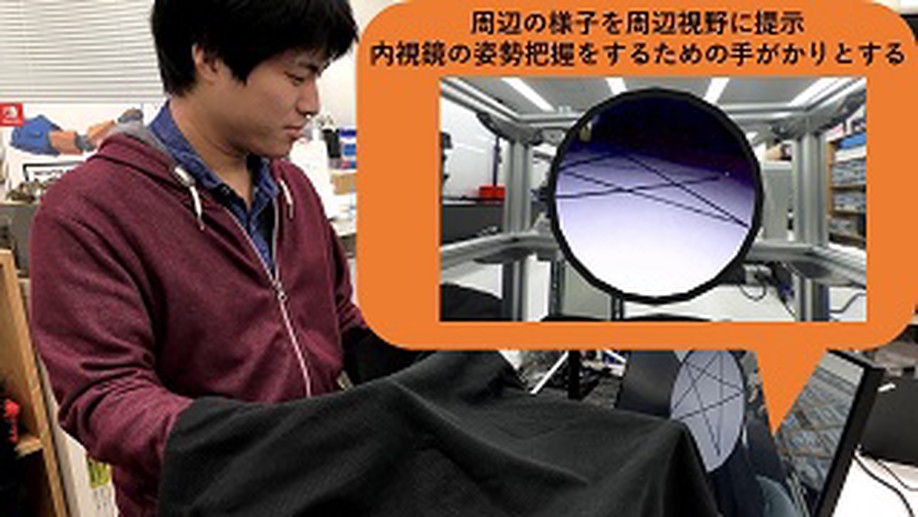
A Support System for Endoscopic Surgery by Visual Stimulation Linked to the Endoscope Posture
This system presents visual stimuli based on endoscope posture information to support spatial awareness for surgeons. It aims to assist novice users in endoscopic surgery.

Motor Prediction and Self-Attribution in Voluntary Movement
The process of self-attribution during active movement was examined from the consistency of visual, somatosensory, and motor prediction information. It was shown that the recognition of the discrepancy between motor prediction and movement outcome is important for the occurrence of pseudo-haptics.

Analysis of Identification Process of Self Image from Multiple Silhouetted Images
This study developed an experimental system to analyze how individuals identify themselves among multiple silhouetted motion images. Experimental results showed that actively exploring distinctive body movements plays a crucial role in enhancing self-awareness during visual interaction.
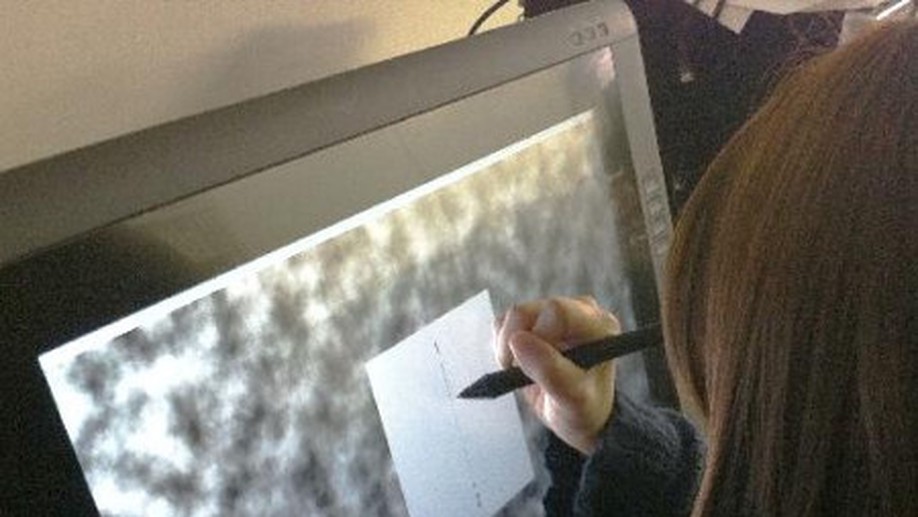
Hawkeye
We developed a system that amplifies fingertip movements and displays them in the peripheral visual field, making subtle motions easier to perceive and supporting fine manual tasks.
